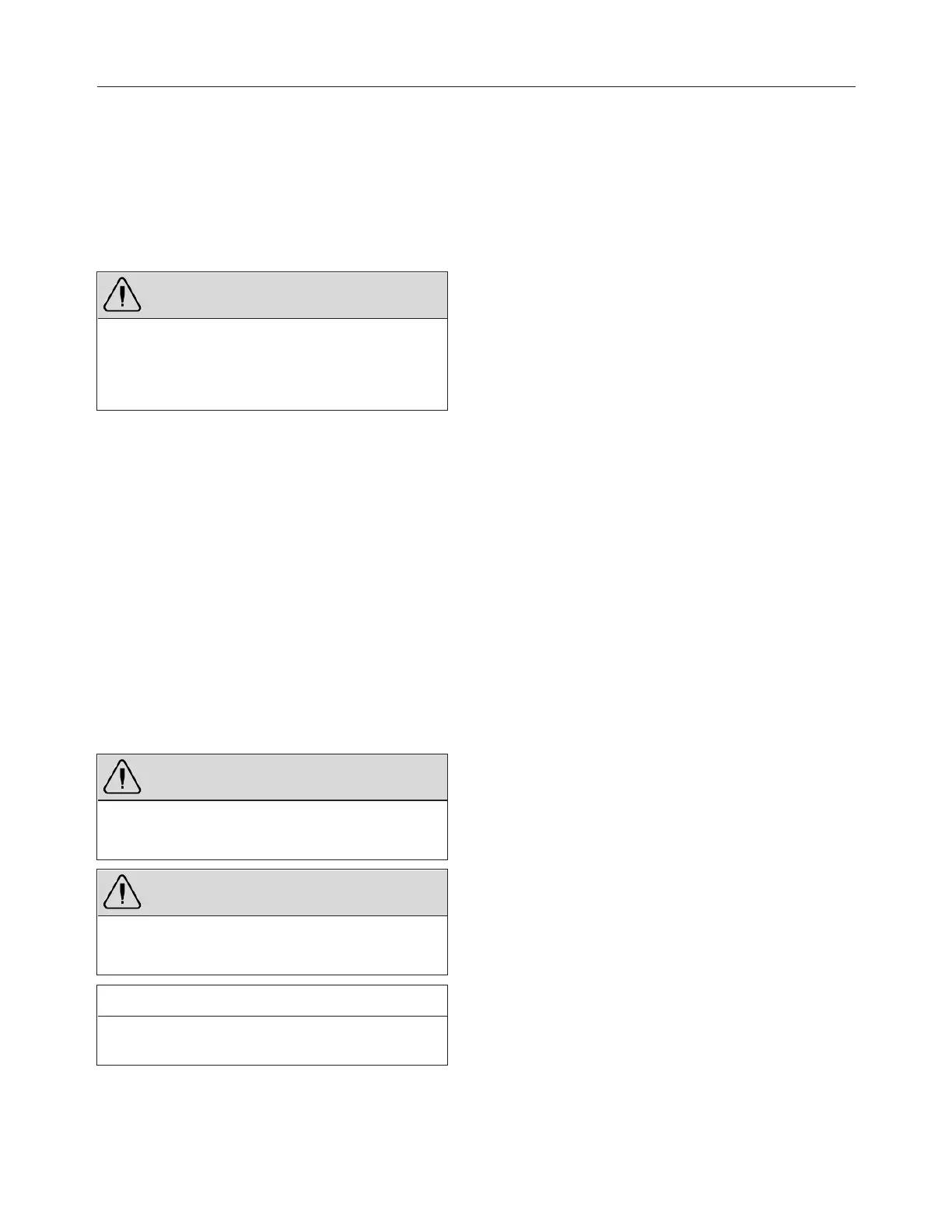5-28 Other Features
PA-1619 Owner's Manual H3-45 VIP
The RSP system counteracts the tendency of a
vehicle to tip over while changing direction
(typically, while turning).
To reduce the risk of rollover, the RSP system
detects potential rollover conditions and slows the
vehicle both by reducing engine throttle (and
hence, engine torque) and by applying service
brakes as needed at the appropriate wheels.
WARNING
During an RSP system intervention, the vehicle
automatically decelerates. The RSP system can
slow the vehicle with or without you applying the
brake pedal, and even when you are applying the
throttle.
During an RSP system intervention, you can
always use your service brake pedal to increase
the braking pressure that will be applied. However,
if you were to apply less braking pressure than
needed or even if you release the brake pedal
entirely during an intervention, the RSP system
will continue to apply the necessary amount of
braking pressure automatically to the appropriate
wheels to mitigate a potential rollover.
Yaw Control is a feature that reduces the risk of
loss of control. If a vehicle’s tires start to slide
during a turn, Yaw Control counteracts the
tendency of that vehicle to spin (or yaw), thereby
reducing the risk of loss of control. Many factors,
including road conditions, load distribution and
driving behavior, can contribute to the
development of a spin.
WARNING
In the case where a vehicle equipped with the ESC
system pulls a trailer, the latter must be equipped
with ABS.
WARNING
Even with ESC- equipped vehicles, the driver
remains responsible for ensuring vehicle stability
during operation.
NOTE
For further details, consult “ Bendix
ABSOperator’s Manual”
DRIVER CONTROLLED
DIFFERENTIAL LOCK (DCDL)
By actuating the dashboard switch, the driver can
lock or unlock differential action.
The purpose of the DCDL is to provide maximum
vehicle traction and control on unfavorable road
surface conditions. When the DCDL is actuated, a
clutch collar completely locks the differential case,
gearing, and axle shafts together. This feature
maximizes traction to both wheels. The lock
position will also protect against spinout damage
to the differential. The DCDL should not be
actuated when favorable road conditions exist.
DCDL is an optional feature.
OPERATION TIPS
1. The DCDL can be locked or unlocked if the
vehicle is standing still or moving at a
constant low speed when the wheels are not
spinning, slipping, or losing traction.
2. When the DCDL is locked, operate the
vehicle at low speeds. DCDL will not engage
and will disengage in speed higher than 5
MPH (8 km/h).
3. When the DCDL is locked, the vehicle’s
turning radius will increase. This condition is
called “understeer.” The driver must use
caution, good judgment and drive at low
speeds when operating the vehicle with the
DCDL locked.
4. Always unlock the DCDL as soon as the
need for maximum traction has passed and
the vehicle is traveling on a good road.
5. Do not lock the DCDL when the wheels are
slipping or losing traction, or damage to the
axle can result.
6. Do not lock the DCDL when the vehicle is
traveling down steep grades, or potential loss
of vehicle stability could occur.

